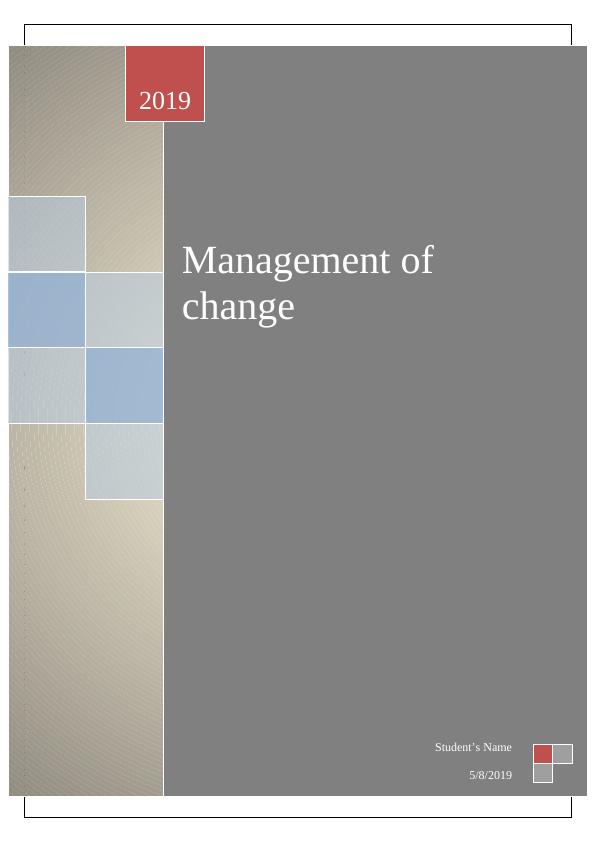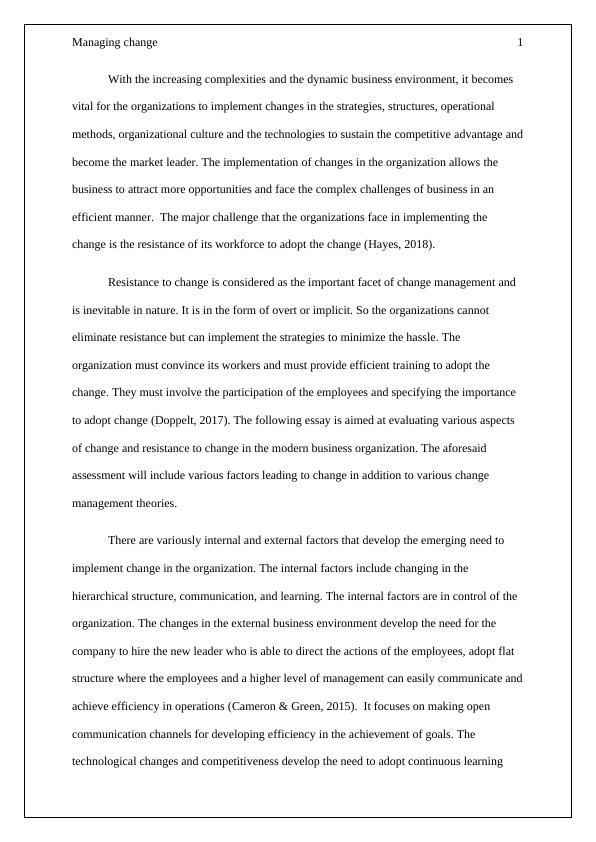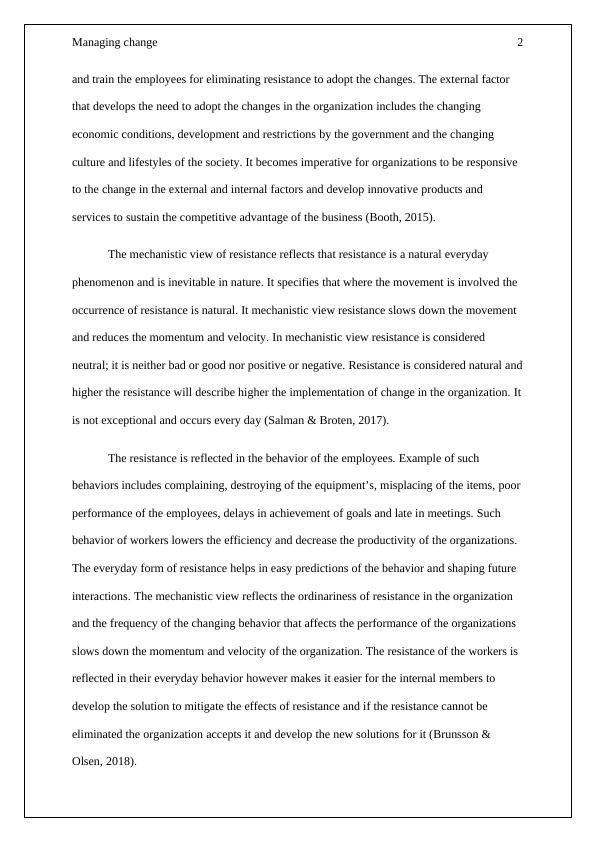Managing Change in Organizations
10 Pages2765 Words74 Views
Added on 2023-03-17
About This Document
This essay explores the importance of managing change in organizations and strategies to overcome resistance to change. It discusses various factors leading to change and different change management theories. The essay also highlights the need for organizations to be responsive to internal and external factors and develop innovative products and services. The role of communication, leadership, and employee engagement in successful change management is emphasized.
Managing Change in Organizations
Added on 2023-03-17
ShareRelated Documents
End of preview
Want to access all the pages? Upload your documents or become a member.
Change management.
|14
|3065
|1
Assignment about What is Institutional Affiliation?
|8
|1751
|34
Impact of Change Management on Employee and Business Performance
|6
|1527
|62
Mechanistic Structure and Decision Making in Health Care Organizations
|6
|1071
|390
(PDF) Organizational Change Management
|10
|2551
|23
Pilkingtons Organizational Change Process
|11
|2479
|97



